Option Spread Strategies: Trading Up, Down, and Sideways Markets
$11.54
| Author(s) | |
|---|---|
| Format |
|
| Pages |
282 |
| Publication Year |
2009 |
Making trades in a directionless market can be a challenge, and directionless markets occur more frequently than bull and bear markets combined. Options pioneer and noted author Anthony J. Saliba provides readers with the tools and tactics to address a sideways market. Saliba focuses on strategies in the butterfly family of options―butterflies, condors, and iron butterflies―showing how to use these sophisticated tools in these markets.
Author’s Note:
The fact that listed option trading volumes are exploding is not news. As of May 1, 2008, volume is up approximately 41 percent over 2007, which was also a record year. Option volumes have grown at a rate of approximately 30 percent per year for the last four years, and have more than tripled since 2000. The forces driving option growth are much larger than recent market volatility and the need to hedge risk—after all, much of the double-digit growth took place during the low-volatility years of 2003 through early 2007. Several forces have combined to give the individual investor greater access to the options markets and to help level the playing field for the individ ual and the professional options traders:
- Technology—All exchanges are now fully or partially electronic. This has opened up access to the individual options trader, as brokers now supply front-end systems that offer direct connections to every exchange and tools to help analyze, execute, and manage position risk.
- Commissions—Commission rates continue to plummet as brokers leverage technology and compete for business.
- Number of viable exchanges—The number of options exchanges continues to defy predictions and grow. With the recent addition of the Nasdaq Options Market (NOM), the number has now reached seven. These exchanges are in competition for the business of individual investors, and fee reductions and other incentives are the result.
- Educational resources—The number of entities dedicated to options education and training continues to increase, along with the number of investors utilizing their services. The exchanges, the Options Industry Council, brokers, and other private entities offer robust programs at low cost.
- Tighter bid-ask spreads—Although it is having a large negative impact on institutional options traders, the penny pilot program is very beneficial to the smaller individual investor because it has tightened spreads in many popular names.
The bigger news in the U.S.-listed options market is the growth in the electronic trading of spreads. Behind the scenes the volume of trading of complex option structures has outpaced overall growth in options trading. This book is dedicated to the art (and science) of spread trading. A number of factors have contributed to the explosion in spread trading:
- Electronic spread books—Currently the Chicago Board Options Exchange (CBOE) and the International Securities Exchange (ISE) offer elec tronic spread books (the Philadelphia Stock Exchange [PHLX] is not far behind). These electronic “complex order books” allow traders the potential to electronically enter and trade multileg spread orders of various strategies—all of which are covered in this book—without the risk of being “legged” (missing one side of the spread). Spreads also can be traded in penny increments even if their underlying options cannot.
- Ease of entry and exit—These same electronic spread books are accessible through the same front-end systems offered by most brokers. (If a broker doesn’t offer direct access to the spread books, it is time to switch brokers.)
- Portfolio-based margining—In the past, the margining of spreads sometimes made them economically unrealistic for many investors. The availability of portfolio-based margining at many brokers has made spread margining more realistic and affordable for many investors.
- Limited-risk strategies—Spreads offer investors different ways to participate in market scenarios in a limited-risk fashion. Vertical spreads, butterflies, condors, and time spreads are all limited-risk strategies that the investor can use to address different market scenarios. (After the recent subprime meltdown, limiting risk has once again become fashionable.)
Spread trading is the new frontier for the individual options trader, and this frontier is opening up rapidly. This book is dedicated to spread strategies, both of the limited-risk and unlimited-risk varieties, and to how and when to use them.
Contents:
- The Covered-Write
- Verticals
- Collars and Reverse-Collars
- Straddles and Strangles
- Butterflies and Condors
- Calendar Spreads
- Ratio Spreads
- Backspreads
Option Spread Strategies: Trading Up, Down, and Sideways Markets By Anthony J. Saliba pdf
20 reviews for Option Spread Strategies: Trading Up, Down, and Sideways Markets
Clear filtersOnly logged in customers who have purchased this product may leave a review.

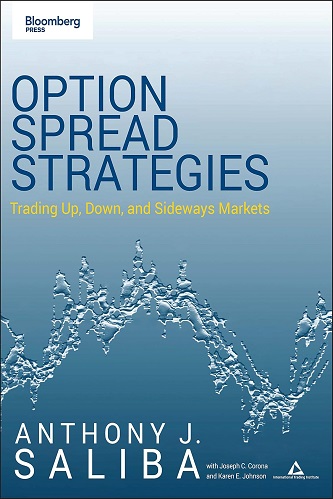
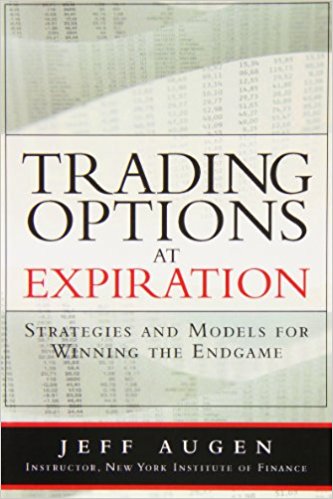
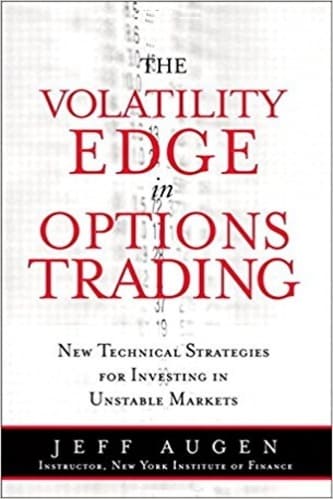
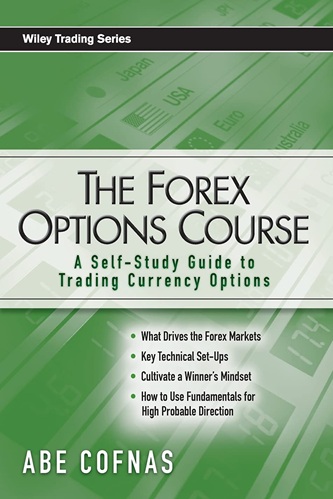
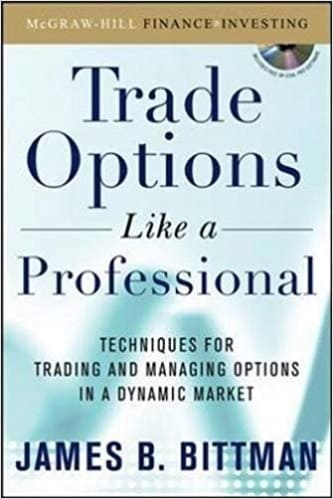
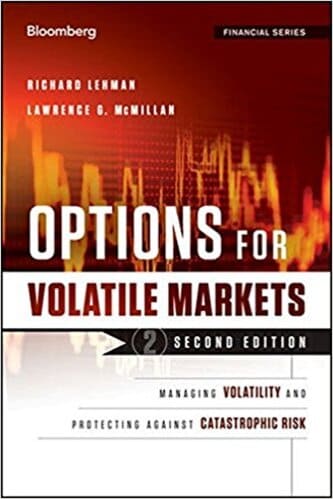
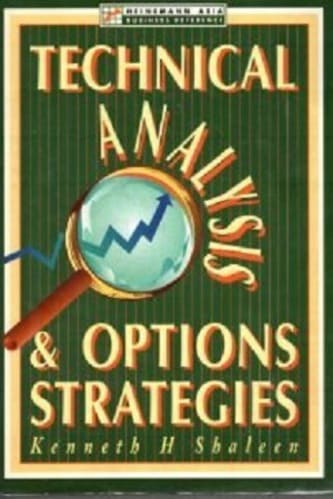
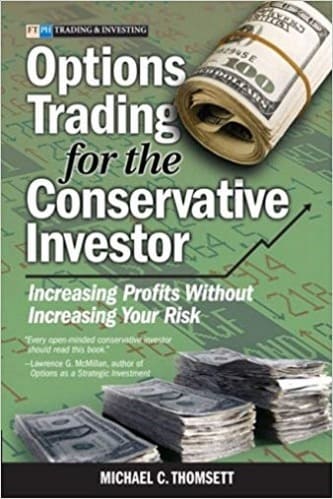
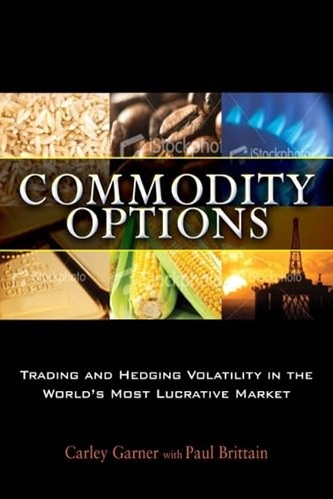
Abdullah Marin (verified owner) –
This book is extremely useful for those who want to understand options trading under the point of view of a real trader. It shows the Greeks and graphs of the main options strategies, which is something that I had never seen in any other book. It’s written in a very simple way. No formula, no maths, no complexity. I strongly recommend.
Maren Duarte (verified owner) –
Easy explanation
Ariya Cano (verified owner) –
obviously not for beginners but serves as excellent reference book.
Jayceon Harmon (verified owner) –
This book is written some of the foremost experts in the options industry. Anyone looking to take advantage of any market, not just a bull or bear market, should read this book. The “how-to” approach of this book will enable even a novice to participate in what has become THE DERIVATIVE MARKET of choice.
Alistair Butler (verified owner) –
The book excels in that it makes options strategies easy to follow. It does this by showing detailed diagrams and graphs of many strategies. This would be a great book to use explaining spread strategies to someone new. I just didn’t feel as if I had read anything above average when I finished it.
Lionel Melton (verified owner) –
I got some interesting ideas that I could incorporate with my own methods.
Zayne Burnett (verified owner) –
The stratergies involved appear more complicated than I wish to be utilizing at this time;therefor i will not have much use for it.
Athena Nelson (verified owner) –
Had some info that I was looking for.
Jazmine Wright (verified owner) –
Good refresher on different spread trading strategies. A little heavy on the greeks. Comes across as a school textbook with quizzes at the end of each chapter.
Magnus Flowers (verified owner) –
Very thorough, but the authors make things more complicated than they are. Perhaps they wanted to show how smart they are. I am only interested in using options to make money.
Grayson Brandt (verified owner) –
This book was nearly useless to me, which was disappointing since I trade hundreds of thousands of dollars worth of option spreads every month.
The book is obsessed with “the greeks”, the partial-derivative relationships between various external factors, like volatility or time to expiration, and the theoretical price of an option or option structure.
Of all the options books I’ve ever purchased this was the least useful.
Maggie Heath (verified owner) –
I particularly like the Greek effects on all strategies presented. This has major impact on what to look out at entry of trade, management of position and exit actions when we reached our target or when something gone wrong horribly.
Rosemary Simon (verified owner) –
If you are looking for a clearly written book on Options to understand and trade some good option strategies look no further. Anthony Saliba and his team have written this cook book style options instruction manual to educate the reader (with beginner/intermediate level options skills), so the reader can assess if the strategies are a good match to his/her risk appetite and trading philosophy and then trade them for potential profits.
As the authors indicate in the `Important Disclosures’, in order to trade the strategies discussed in this book the reader must have his trading account approved by a broker/dealer for that specific trading level. With this in mind, I recommend you look at three of the eight strategies discussed by the authors: Strategy 1 (Covered Write, or Covered Call or Buy Write), Strategy 2 (Bull Put Spreads with cash covered puts), Strategy 4 (Straddles and Strangles), since the level of approval required should be straight forward (for example, a level II approval at Fidelity).
Any book however well written can stand some fine tuning to maximize the reader’s benefits. Given the excellent exposition in the rest of the book, I would recommend that the authors could have taken greater care with the opening chapter on Covered Calls. The Profit/Loss diagram shows two profiles (Long Stock and Short Call). It would be a perfect accompaniment to the text if the authors showed the profile for the position (Long Stock + Short Call). This would better illustrate the `breakeven and Loss’ on the downside, and the `profit and the opportunity loss’ on the upside. The accompanying text misstates the maximum profit, which does not fit the ATM call in the example. In addition, the figure (Example 1, p 20) for original position and closing trade is introduced without any explanation in the accompanying text. Finally, to close my nit-picking mode, the authors could have included the P&L diagrams for a simple Call and Strike along with the definitions so that the book is amenable even to the rank beginner.
The entire book is strewn with simple and concise advice (`nuggets of wisdom’). Example1: `Covered writes are not “fire and forget” trades. They require attention …’ Example 2: `call and put bull spreads and call and put bear spreads are synthetically equivalent… and may be used interchangeably to accomplish the same task. Deciding which one is best to use depends on the pricing of at the point of execution. Example 3: Traders looking for a “sure thing” can become addicted to short straddles and strangles. They give the appearance of making money in every direction and have unlimited profit potential.
The inclusion of Greek profiles with each of the strategy discussions adds immensely to the understanding of the reader and provide the tools to assess the strategies for themselves. The authors neglect to say that the horizontal axis in the Greek chart represents `Stock Price – Strike Price’. All examples appear to be academic although explained very well. Inclusion of real ticker symbols would add greatly to the reader’s feel and understanding (even if the author’s may have to add one more caveat to the `Important Disclosures’ section).
Dylan Kent (verified owner) –
I would have given 5 stars, if the explanation of setting up the “box” for deciding to use a Put Credit Spread or a Call Debit Spread was explained better and more important for me the psychological reasons why people do like credit spreads. And vice versa. I would have given the book 4 and 1/2 stars if I could
Maryam Andersen (verified owner) –
There is nothing wrong with the book information. It is a good introduction to the various option strategies. But is no better than all the other option introduction books. It has the same definition of the Greeks, the name of the option strategy (butterfly, condors, straddles, etc) along with the profit/loss graphs that we see in all the option books and online material.
Given that Saliba is a great trader, I was hoping that there will be some insight and personal tips from his experience. Plus, Given the title (in directionless markets), I thought it will be a book focused on straddles, strangles and ratio spread strategies and how to play them in different scenarios, and what to look for in the price action or charts when using them etc. Instead, the book from the start to finish is basic definitions and calculations of maximal loss and profit based on the greeks for each strategy before moving to the next.
The book should be called: An introduction of option strategies for beginners.
I gave the extra star because the information is not wrong, and it is a good summary of all the option strategies. But suggesting that this is a book on how to deploy options in directionless markets is misleading.
I learned much more from listening to the Anthony Saliba interview in Market Wizards than from his entire book.
Ashton Reese (verified owner) –
It’s a good idea before buying a book, especially a book on options trading, whether you’re in the audience for which the book was written. If you’re a beginner, don’t start here. I would recommend another book by the same author, “The Options Workbook.” If you can make it through that book, you’ll be more than prepared to take on this one.
Learning options or anything else involves two very different types of skills: (1) knowing how to do what you’re trying to learn; (2) knowing how to learn it. You can learn (1) by studying the subject itself, but not (2). And unfortunately, there are very few options-trading books on the market that will teach you. The reason is that most of their authors, while they may be great traders, don’t know how to teach. In fact, when it comes to giving satisfactory explanations, many are scatter-brained. The great strength of Saliba’s books is that he does know how to teach. The books are in workbook format. He gives you examples of the strategies he’s discussing, gives a fairly detailed analysis of each, and then offers practice questions (with answers) after each strategy, as well as at the end of each chapter. There’s also a bonus final exam at the end of the book. This is sound teaching technique; these books are almost ideal for self-study. If you’re anything like me, you learn by doing, not by staring at a page in a book. Both of Saliba’s books are very hands-on.
Why do I say that Saliba’s books are “almost ideal” for self-study? Because Saliba doesn’t always spell out each of the steps that a beginner would have to know in order to justify the conclusions he draws. One thing a beginner has to know is how to construct a profit/loss table for any strategy he or she is studying, however simple or complex. And from that table, he or she must be able to construct the graph. Once this is done, he or she will know what the profit/loss picture looks like at expiration. The student will then know, for each price of the underlying at expiration, the intrinsic value of the component (long call, short call, long put, short put, long stock, short stock), and the profit/loss value for each. Once this is known, the combined profit-loss figure can easily be calculated. By looking at the table, one will know where the breakeven points are, as well as the maximum gain and maximum loss one can expect when putting on that strategy. “The Options Workbook” gives both profit-loss tables and graphs. But it doesn’t make explicit how the values in the table are calculated. (Saliba probably assumes that the reader already knows this. But a beginner doesn’t know this, unless he or she is told.) To close this pedagogical gap, I would recommend the beginner read James Bittman’s book, “Options for the Stock Investor,” especially chapters 1 and 2. While this process of constructing tables and graphs may at times be tedious, and even seemingly redundant, DON’T TRY TO SIDESTEP IT. Unless you understand the configuration of any option strategy at expiration, you really don’t know what you’re doing. And when you go online and click on the button to put on your position, you still won’t know what you’re doing. I’m convinced that a great many people who lose their shirts in the market, do so not because they were wrong in their prediction of the direction of movement in the underlying, but because their assessment of their positions were either wrong or incomplete.
“Option Spread Strategies” does a fine job of integrating the option Greeks, and volatility, into the analysis I’ve just described. However, this means that you have a working understanding of the Greeks before you begin. Saliba’s discussion of the Greeks in “The Options Workbook” is woefully inadequate. In “Option Spread Strategies,” as I said, he skillfully weaves the Greeks into the fabric of the strategies he discusses. But again, he’s making great demands on the reader’s understanding of the Greeks. To get a working knowledge of the Greeks, I would recommend two books: (1) “Trading Option Greeks,” by Dan Passarelli; (2) “Trading Options as a Professional,” by James Bittman. (All the books I’ve mentioned are available at sacredtraders.com) In Bittman’s book, focus on chapter 4. In that chapter, pages 118 to 134 are crucial, because Bittman hammers away at the essential distinction between option delta and position delta, option gamma and position gamma, and so on, for each of the Greeks. Unhappily for the beginner, the discussion is extremely terse. But it contains everything you have to understand to work with the Greeks. After I had torn out what little hair I have left, I finally got it. So will you. And when you’ve got it, you will be more than well-prepared to delve into Saliba’s book “Option Spread Strategies.” But please keep in mind, there are no shortcuts to learning options. If you don’t expend the time and effort to learn before you expose yourself to the market, you’ll most certainly learn from the market itself, the school of hard knocks. And I would say that paying the price for these books is a whole lot less traumatic. If you can’t explain EXACTLY what you’re doing when you put on an options position, what you hope to gain, and what you stand to lose, you don’t understand it. Unfortunately, there’s someone else taking the other side of your trade, whose face you’ll never see and name you’ll never know. He too may not understand what he’s doing. But is that a risk you can afford to take?
Kamiyah Murray (verified owner) –
I saw that each strategy had about 30 pages of information, so I thought that the depth of discussion would be quite good. Unfortunately, the first 10 pages of each chapter is simply which options make up the strategy. Investopedia does the same job in 1 page. The next 10 pages shows pictures of the greeks, which I did not find very useful. Probably the reason why is that there is not a single options chain in the whole book. The values he picks for his greeks would seem to come out of thin air to the newer trader. Also, the pictures often times do not use the same scaling/pricing as the examples that they are supposed to be describing. Qualitatively, they are good, but it could have been much better if Saliba matched the graphs more tightly to the text. The only parts I liked was the last 10 pages when he talks about adjustments. I have had a tough time finding books about adjustments, and this one gives a good introduction to adjustments. Sometimes though, his advice is not really advice: “If your trade moves against you, then take appropriate actions to protect your capital.” What can I do with that? I thought the exercises at the end were trivial. They test you to see if you understood what you read like “What does a short put vertical made of?” I would have rather seen questions about what to do in different situations, but these only make up 10 or 20% of the questions.
Overall, I would describe this book as teaching the newer trader about how options work, but not how to trade them successfully. Saliba avoids complicated math and keeps it simple. As other reviewers have noted, he is perhaps a better teacher than others. However, this is really only an overview of option strategies and does not give enough real-world scenarios to equip the reader to make money by trading options.
Emberly Hardy (verified owner) –
Great
Celia Fuentes (verified owner) –
This title really digs deep into different option strategies, analyzes when each one is more favorable and when it’s not recommended. Explains in detail how the Greeks start out in the construction of the option strategy and how they change depending on expiration date, volatiliy and other factors.
I really found the academic aspect of exercises and quizes refreshing and useful in this genre.
The author is definitely knowledgeable in options trading and is just giving us a glimpse of how his mind works in different market situations. I would suggest to take advantage of this information, experiment to learn and then make money in the market whether it’s going up, down or sideways.
Terry Padilla (verified owner) –
This is a great straightforward book from Tony Saliba on basic options strategies. While it does not contain all of the various strategies that can be found in a larger volume, it’s explanation is one of the best that I have read.